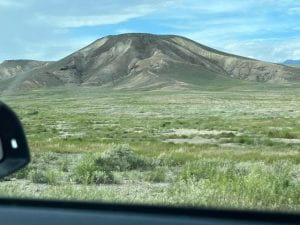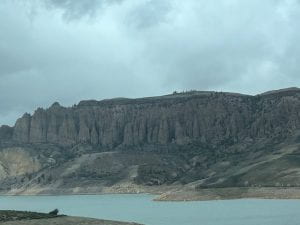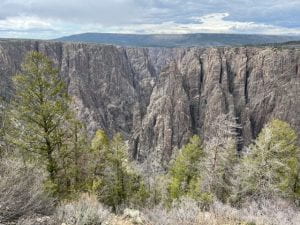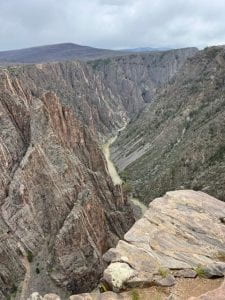On Tuesday (May 8) we started across the Central Plains en route to Zion National Park. The Plains are not tourist attractions, dotted by grain elevators, oil rigs and wind turbines, but the majesty and profusion of the turbines deserves mention. They are like immense alien visitors, turning slowly with a fairly stiff wind that followed us the last two days.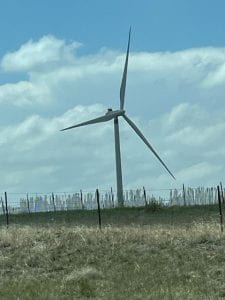
They are so imposing, rising up from the floor of earth into the atmosphere, apparently communicating with their home planet. They are an intriguing contrast with the rural conservative industry of agriculture. They speak to the alternative to fossil fuel consumption with a profusion of giant turbines, hundreds of them along Route 70 on the Central Plains.
We landed in West Pueblo, Colorado Wednesday night, listening to incessant thunder and falling rain. This was going to be our slow tour day to catch the eastern Rockies and river valleys between here and Grand Junction. By tomorrow afternoon we hope to be at Zion, beautiful, beautiful Zion. Yes it was named by Mormons who marveled at its beauty.
Thursday the Rockies were on the horizon and pretty soon the snow caps and the wind. The temperatures sank as we climbed the mountains, and we reached 11,300 feet and thirty-three degrees by noon. That was the Continental Divide, so we started to lose elevation and gain degrees in the afternoon.
For our leisurely travel-day we headed for Black Canyon National Park just west of Gunnison, a university town with an actual Visitors’ Center, where we stopped to eat leftovers and a Starbucks sandwich for lunch.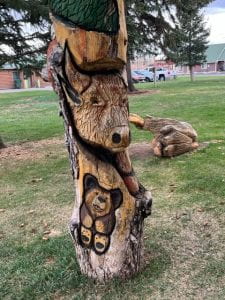
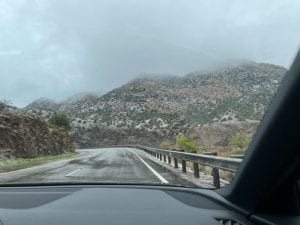
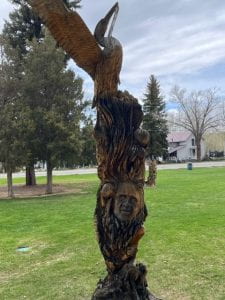
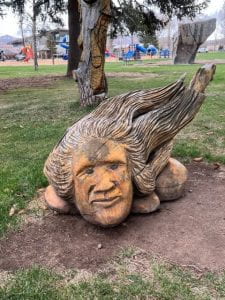 Behind the Visitors’ Center was an unusual playground with carved wooden images like totem poles. They were set-up like playground furniture, but they were striking works of arts from human faces to cow faces on a pole to a corn cob boat/ sofa. This town was the gateway to the Black Canyon National Park just to the west.
Behind the Visitors’ Center was an unusual playground with carved wooden images like totem poles. They were set-up like playground furniture, but they were striking works of arts from human faces to cow faces on a pole to a corn cob boat/ sofa. This town was the gateway to the Black Canyon National Park just to the west.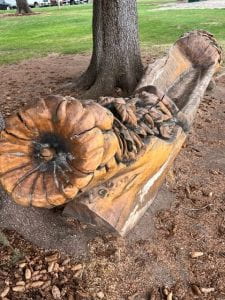
Below you see fissures inside and outside the Park. They show the variable erosion from snow melt and water run-off into the Canyon..
The Gunnison River cuts through and into the Canyon. It winds far below the surface of the Canyon. You can’t see it except at ideal angles looking upriver, and it looks like it’s flowing uphill as it foams over the rocks in the the river bed. We spent an hour in the Park stopping at special viewpoints, sometimes walking to the edge where there were safety railings.
Black Canyon National Park has great views and hiking and camping. A great foretaste for Zion and Bryce this weekend.